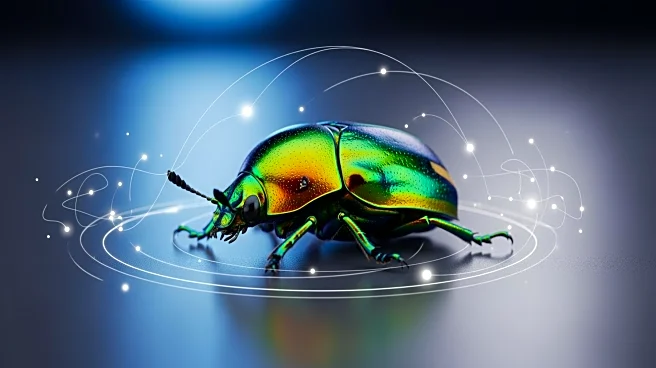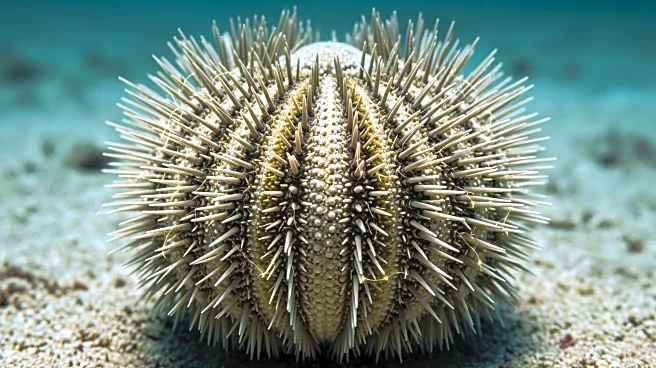What's Happening?
A recent study has successfully utilized motion compensated magnetic resonance imaging (MRI) to observe the physiological responses of a sun beetle, Pachnoda marginata, while it walks on a treadmill. The research involved tethering the beetle using a UV-curable
adhesive and placing it on a spherical treadmill setup, allowing it to move freely. The study aimed to acquire motion-free MRI images of the beetle, demonstrating that the setup can effectively capture detailed images without triggering motion artifacts. The treadmill setup was integrated with an optical imaging system to track the beetle's movements, providing real-time motion information. This innovative approach allows researchers to study the beetle's behavior and physiological responses in a controlled environment, offering insights into the insect's motion dynamics.
Why It's Important?
This study is significant as it introduces a novel method for studying insect physiology using MRI technology, which is typically challenging due to the small size and rapid movements of insects. By successfully capturing motion-free images, researchers can gain a deeper understanding of insect anatomy and behavior, potentially leading to advancements in entomology and related fields. The ability to observe live insects in motion without interference from motion artifacts could enhance research in areas such as insect biomechanics, neurobiology, and ecology. Furthermore, this technique could be adapted for use with other small organisms, broadening the scope of biological research and improving the accuracy of physiological studies.














